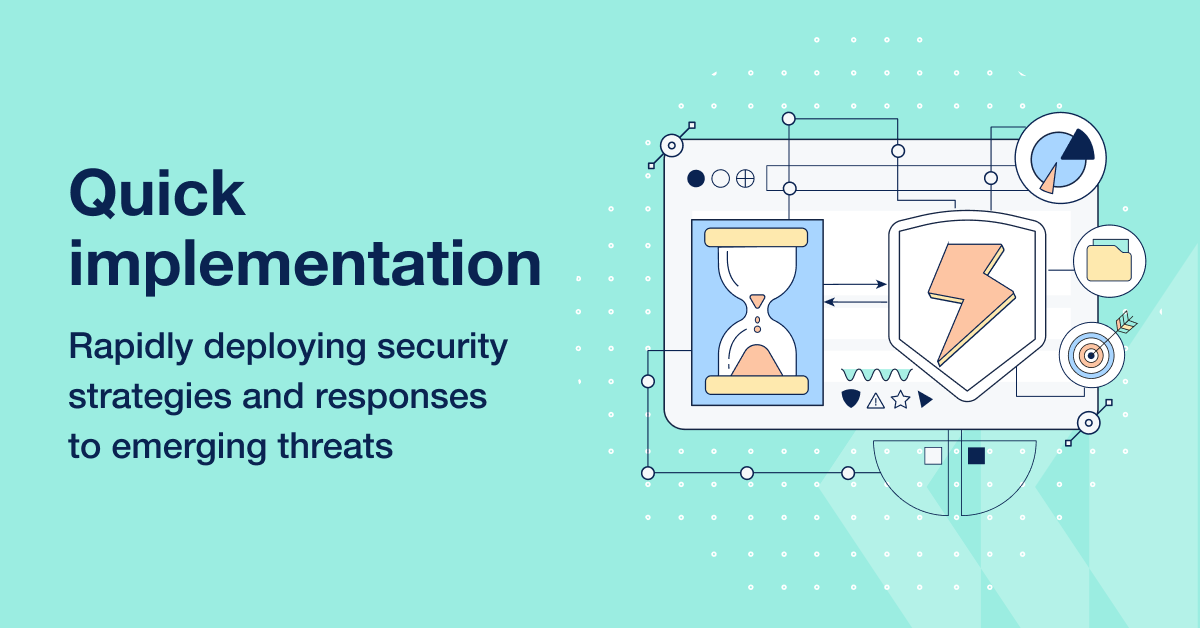Chapter 1: What are vCISO Services?
The SMB Security Landscape
Small and medium businesses are grappling with growing and evolving cybersecurity threats and compliance regulations. These challenges can lead to significant financial losses, legal penalties, and a damaged reputation.
Key challenges include:
- Rising security threats: Businesses face a continuous increase in sophisticated cyberattacks.
- Increased compliance requirements: Regulatory demands are becoming more stringent across industries.
- Insurance complications: When applying for liability insurance, companies must answer cyber-related questions accurately. Any misinformation can void the policy if a cyber incident occurs.

To navigate these challenges, having a Chief Information Security Officer (CISO) is crucial for managing and implementing an effective cybersecurity strategy.
Yet, hiring a full-time CISO can be difficult.
The availability of skilled CISOs in the market is limited. Those who can afford it pay a high price – an average CISO typically costs more than $150,000 annually. Most SMBs cannot afford that amount.
To address this need, many MSPs are offering vCISO services to organizations with tighter resources to help them manage cybersecurity risks and compliance. A virtual CISO (vCISO) offers flexible, cost-effective cybersecurity leadership on a part-time or contract basis, therefore enabling all organizations – regardless of size and budget – to be secure.
vCISO services are vital in today’s cybersecurity landscape, offering flexible and strategic leadership to help organizations navigate threats confidently.
Definition and scope of vCISO services
vCISO Definition
A Virtual Chief Information Security Officer (vCISO) is a third-party cybersecurity professional who provides information security guidance and services to organisations on an as-needed basis.
A vCISO, also known as a Virtual CISO, CISO as a Service, or Fractional CISO, is an external professional security expert that provides strategic security guidance and hands-on security services to organizations on a part-time or contract basis. This way, small businesses can access high-level cybersecurity expertise without incurring full-time expenses.
While there are varying definitions of the vCISO role, there are underlying commonalities:
- Understanding goals and risks
- Creating the security strategy
- Assessing cybersecurity gaps
- Understanding the strategic vulnerabilities
- Implementing or overseeing the implementation of the remediation plan
- Overseeing compliance processes
- Reporting to top management
Based on these responsibilities, there are hundreds of areas where vCISOs can serve and add value. While the vCISO offering should be tailored to each organization’s specific needs, below are 11 programs that should always be addressed.
11 programs every vCISO should address
Any MSP or MSSP that wants to expand into offering vCISO services should consider these 11 strategic areas when creating their service offer and portfolio for their customers.
Knowing what important things (like people, tools, and data) you have so you can protect them.
Asset management involves identifying and cataloging all critical assets, including people, processes, tools, and data. This program ensures that a comprehensive understanding of what needs protection is established, laying the foundation for effective cybersecurity measures.

Benefits for clients and providers
vCISO services are especially attractive to MSPs and MSSPs as they address a growing need from their SMB clients for proactive cyber resilience and compliance management while offering the potential to grow recurring revenues.
As shared by 200 security leaders, the primary benefits of offering vCISO services include (you can see the results of the State of the Virtual CISO 2024 Report below):
- Additional revenue streams
- Opportunity to upsell more products and services to existing clients
- Increased profit margins (one person managing multiple clients)
- Improved customer security
- Greater differentiation from competition
- Enhanced customer engagement and loyalty: Many vendors offering vCISO services claim that providing these services enhances their customer intimacy allowing them direct contact with customers’ top management.
Top benefits of adding vCISO services to MSP and MSSP offerings

According to the State of the Virtual CISO 2024 Report, among the primary benefits of offering vCISO services, respondents highlighted the ability to improve customer security (43%), easily upsell more products and services (38%), followed by growing recurring revenue (37%), enhanced client engagement (36%), and an opportunity to differentiate from the competition (36%).
The primary benefits for clients include:
Challenges with providing vCISO services
Transitioning to a vCISO role isn’t easy and not everyone can succeed in this new career path. It requires moving from a technical focus to a security focus, along with gaining specialized knowledge and skills to perform effectively.
When transitioning from IT to vCISO services, MSPs and MSSPs often encounter two main challenges: shifting their mindset and structuring their offerings. Many struggle to move from an IT-focused mindset to thinking like a CISO, which is crucial for success. Simultaneously, they often spend too much time and energy on structuring their offerings, leading to analysis paralysis.
Challenges in transitioning to vCISO:
- Mindset Shift: Moving from an IT-focused approach to thinking like a CISO.
- Broader risk assessment: Focus on a comprehensive assessment of risks, not just tools.
- Business understanding and communications: Grasp and communicate the business implications of cybersecurity.
- Combine strategy & tactics: Think and operate both strategically and tactically.
- Structuring Services: Overcoming analysis paralysis and determining:
- Getting started: Determine the necessary expertise, skills, and tools to get started.
- Client offerings: Decide what specific services to offer your clients & properly scope and budget them.
- Maintain and scale services: Ensure customer satisfaction & grow your client base.
Balancing these aspects is key to successfully implementing and scaling vCISO services. The vCISO Academy will equip you with the necessary knowledge and skills to overcome these challenges and successfully implement and scale vCISO services.
- Rising importance of vCISO services: As small and medium businesses face growing cybersecurity threats and increasing compliance demands, vCISO services offer flexible and cost-effective cybersecurity leadership, ensuring robust protection without the need for a full-time CISO.
- Core responsibilities of vCISOs: While vCISOs can perform a variety of tasks, they must address 11 essential programs, including asset management, incident management, and governance, to effectively manage an organization’s cybersecurity strategy.
- Opportunities and challenges for MSPs/MSSPs: Offering vCISO services allows MSPs/MSSPs to expand their service offerings, enhance customer security, and increase revenue, but it requires a shift in mindset from IT management to comprehensive security leadership.














